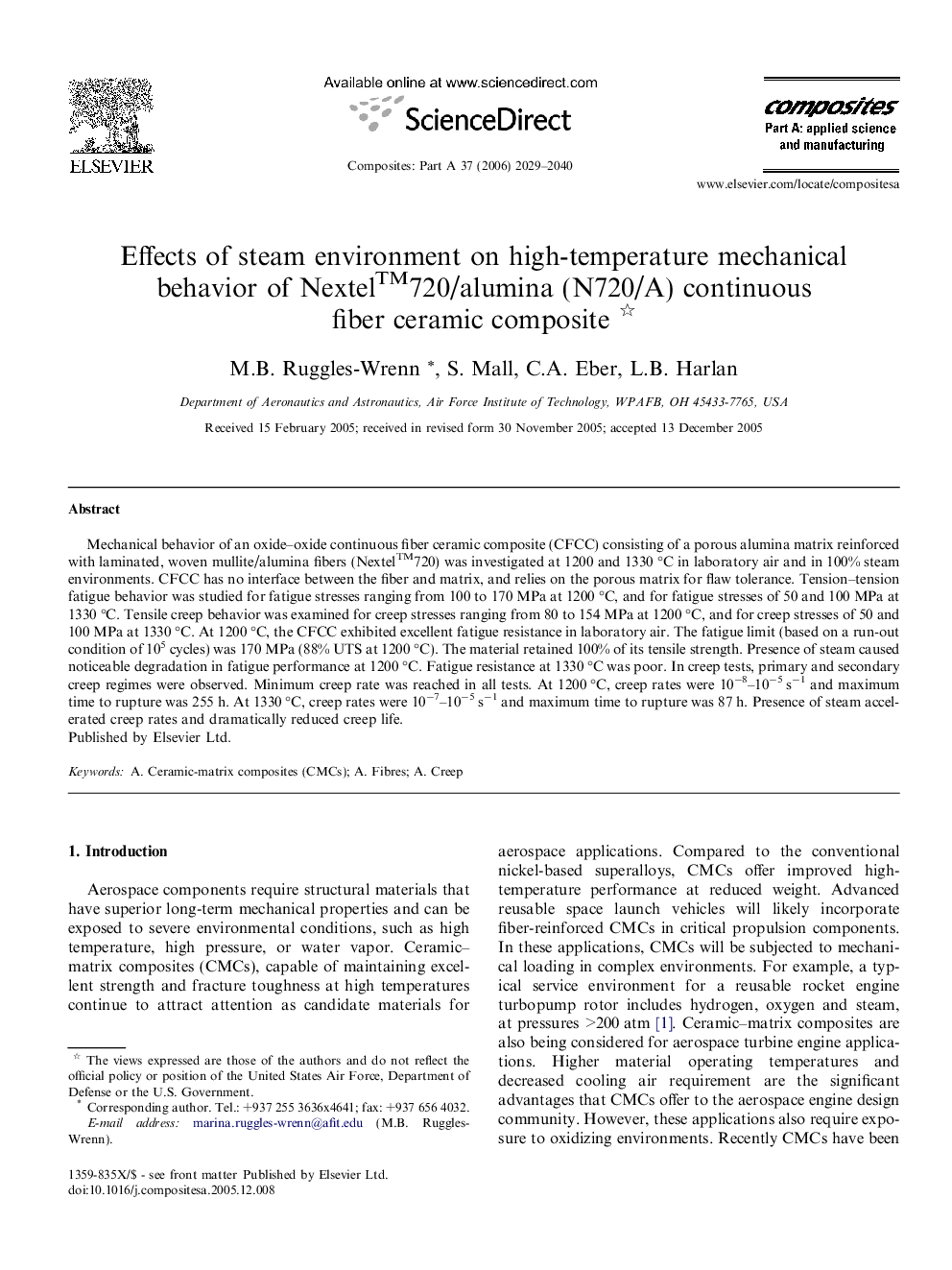| Article ID | Journal | Published Year | Pages | File Type |
|---|---|---|---|---|
| 1467834 | Composites Part A: Applied Science and Manufacturing | 2006 | 12 Pages |
Mechanical behavior of an oxide–oxide continuous fiber ceramic composite (CFCC) consisting of a porous alumina matrix reinforced with laminated, woven mullite/alumina fibers (NextelTM720) was investigated at 1200 and 1330 °C in laboratory air and in 100% steam environments. CFCC has no interface between the fiber and matrix, and relies on the porous matrix for flaw tolerance. Tension–tension fatigue behavior was studied for fatigue stresses ranging from 100 to 170 MPa at 1200 °C, and for fatigue stresses of 50 and 100 MPa at 1330 °C. Tensile creep behavior was examined for creep stresses ranging from 80 to 154 MPa at 1200 °C, and for creep stresses of 50 and 100 MPa at 1330 °C. At 1200 °C, the CFCC exhibited excellent fatigue resistance in laboratory air. The fatigue limit (based on a run-out condition of 105 cycles) was 170 MPa (88% UTS at 1200 °C). The material retained 100% of its tensile strength. Presence of steam caused noticeable degradation in fatigue performance at 1200 °C. Fatigue resistance at 1330 °C was poor. In creep tests, primary and secondary creep regimes were observed. Minimum creep rate was reached in all tests. At 1200 °C, creep rates were 10−8–10−5 s−1 and maximum time to rupture was 255 h. At 1330 °C, creep rates were 10−7–10−5 s−1 and maximum time to rupture was 87 h. Presence of steam accelerated creep rates and dramatically reduced creep life.
